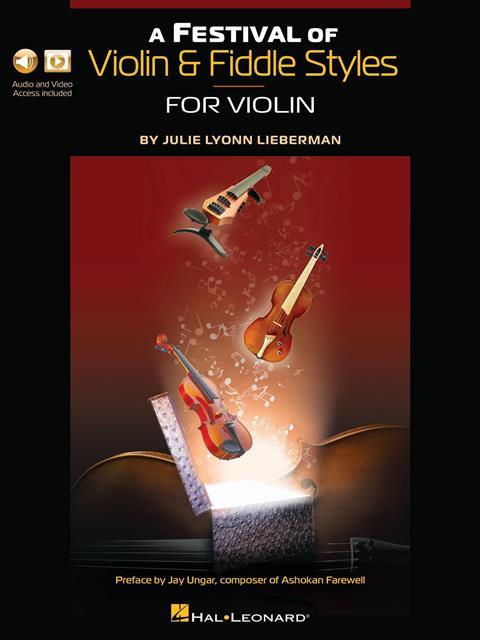Anne Inglis reviews a compilation of folk fiddling methods by the prolific Julie Lyonn Lieberman

A Festival of Violin and Fiddle Styles: For Violin
Julie Lyonn Lieberman
120PP ISBN 9781540057778
Hal Leonard $19.99
For so many years now, Julie Lyonn Lieberman has been the queen of fiddle music. I remember her name from my days at The Strad in the 1980s and she has continued to cement her position in helping to maintain fiddle traditions, collecting folk music, working out the different styles and techniques, and performing them with knowledge and perception. This new book is an extraordinary enterprise in which she has collected thoughts from many fiddlers of different genres, interviewing them and giving generous amounts of space to their explanations of rhythmic phrasing (Tom Morley), rhythm chord patterns (Darol Anger), complicated syncopations (Alan Jabbour),and the vocal and percussive improvisations of the Roma (Chris Haigh). The wonderful and possibly more familiar Roby Lakatos writes on his method of jazz and gypsy fusion.
But these additions are a fraction of this generous enterprise, in which Lieberman valiantly goes through every possible style of fiddle music (to take a handful: bluegrass, Cajun, Cape Breton, Galician, Swedish, East Indian). She introduces their histories and styles, and explains how to achieve the sound through the amount of pressure on the string, bowing idiosyncrasies, the specific improvisation common to a particular style, types of vibrato and slurring.
Supporting audio and video downloads are essential to the understanding of what Lieberman is explaining. There are neat short films on bow geography and bow speed, vibrato, slurs and slide techniques, and ornamentation. Her video introduction puts an emphasis on vertical technique, the importance of arm gravity, and avoiding drilling holes in the fingerboard with your left hand. In her video on ornamentation she shows how a pattern of four notes can be given endless variations through different emphases; in trills she talks about trilling on quartertones, not the semitones of the Western canon. For slides she refers to pressure, distance and timing, and her thoughts on vibrato and pressure should be digested by every struggling student.
The audio provided gives a backing track and sample violin playing of each genre, then allows the student to play solo and improvise variations with a generous number of repeats (these vary). I would have liked a straight backing track with a variety of styles and tunes, but no demonstration, to help with solo performance.
I have taken away some new thoughts about this wide array of styles. The bowing in many instances is extremely tricky, with accents and slurs where you don’t expect them, so coordination is hard. Also, just because a piece is in first position doesn’t make it easy. And you need a really relaxed, gravity-driven right arm to keep playing these tunes. Reading this book made me realise how much I don’t know, how much there is to learn, and finally, what a complete world there is in each of these styles. Fascinating.
ANNE INGLIS
Reference
A Festival of Violin and Fiddle Styles for Violin


































No comments yet